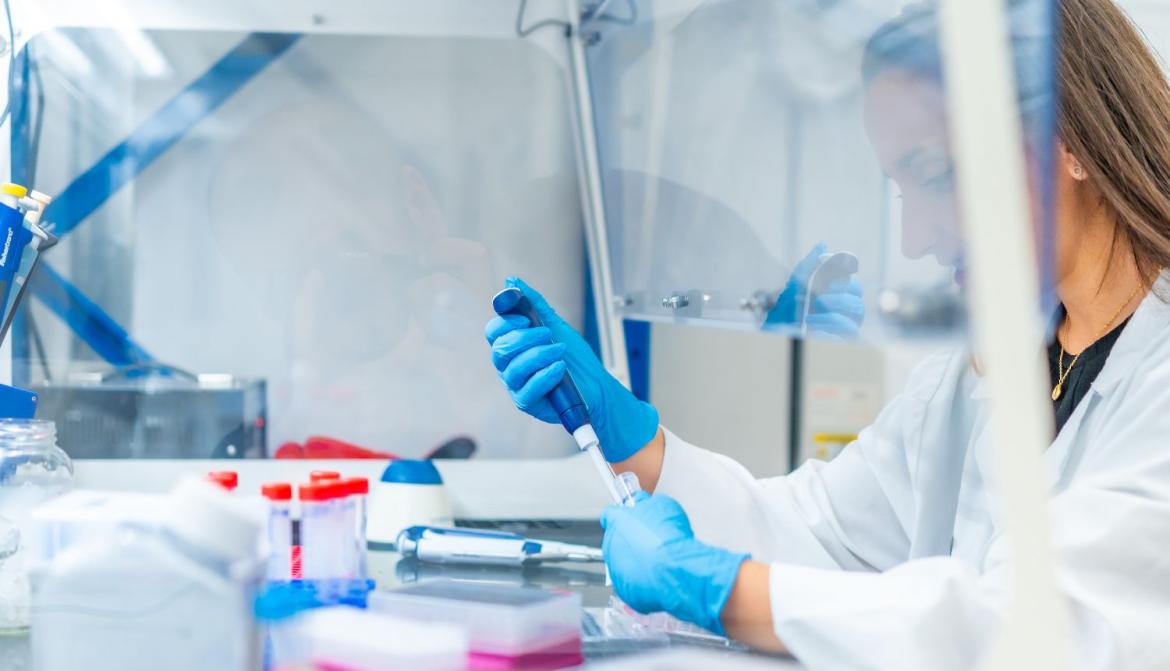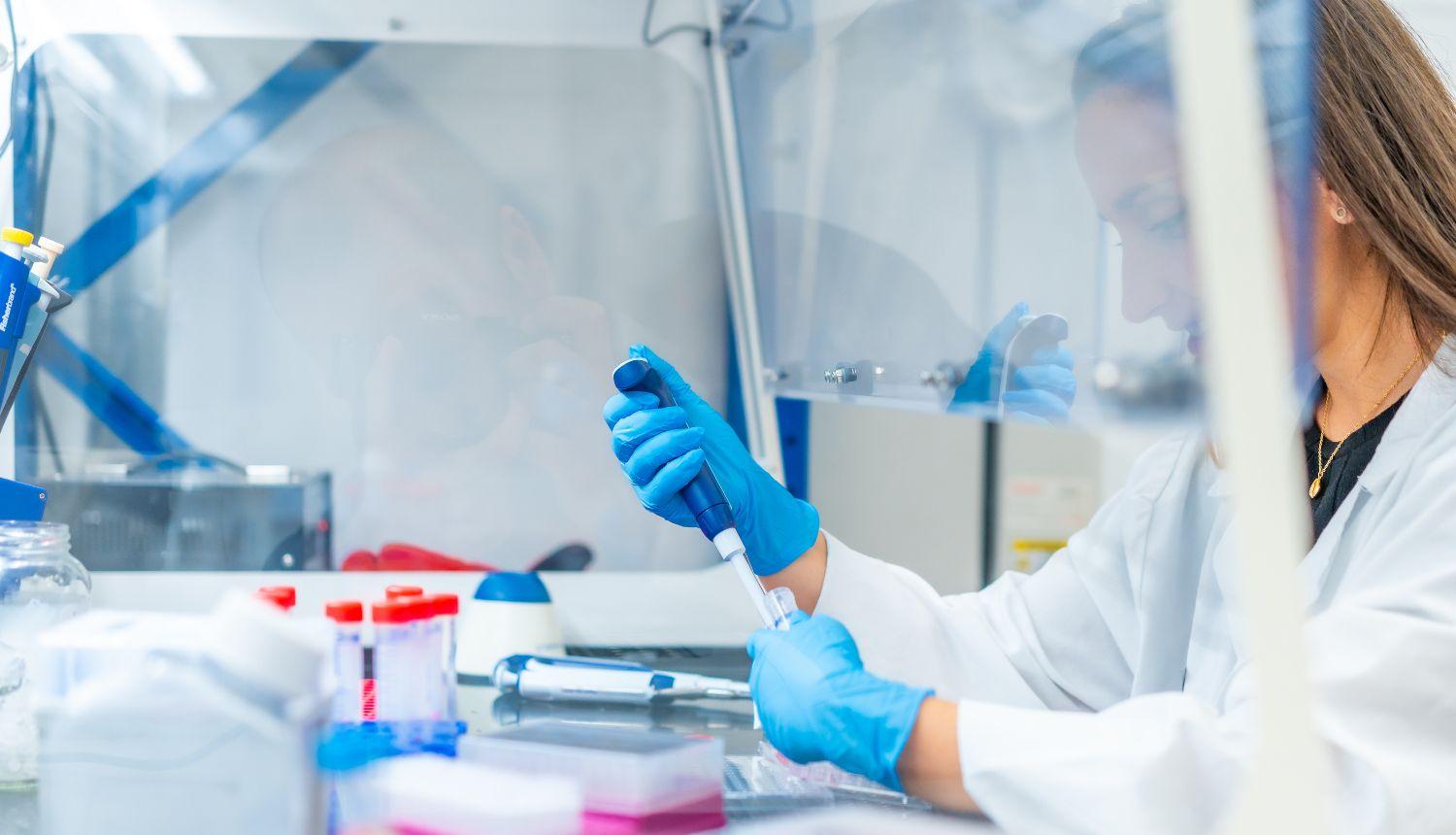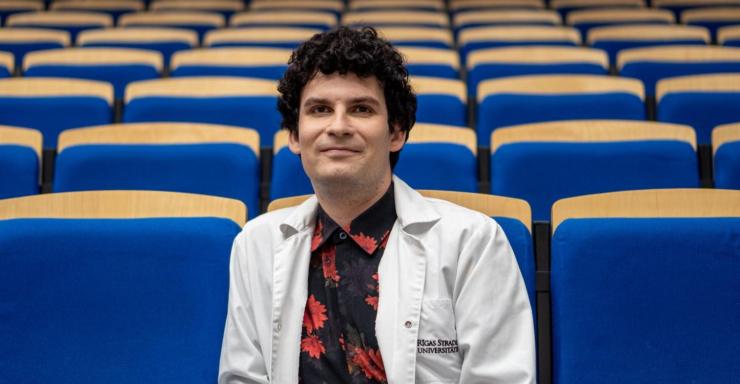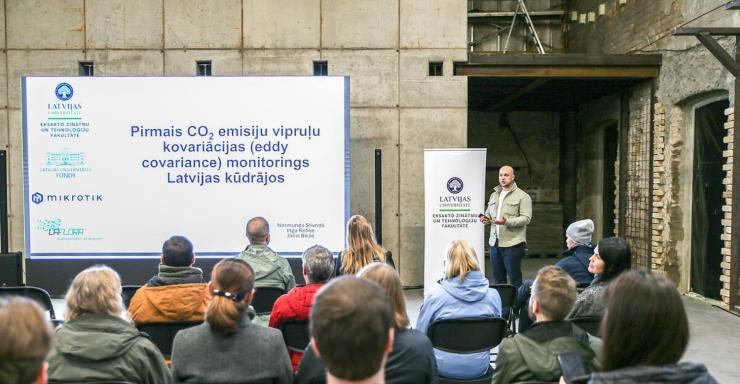Nowadays, tumours often develop spontaneously due to environmental influences, though genetics can also provide predisposition. It is not that cells are "prone to going crazy," but instead that we have evolved an effective error correction mechanism. However, suppose small mistakes appear in this mechanism. In that case, it no longer corrects the original errors, explained Inese Čakstiņa-Dzērve, leading researcher at the Institute of Microbiology and Virology of Riga Stradiņš University, in a conversation on the Radio NABA program "In the Name of Science."

How many cells are there in the human body?
That’s not important, because we cannot count them. We could try to count stars that are millions and billions of years old, but in our bodies, three million red blood cells die every second. More or fewer appear depending on what we give to our body. For example, if there is less oxygen available, the body will attempt to produce more red blood cells. The human being is a dynamic system. Human cells can be classified into more than 200 types, with further subtypes. We usually think that one organ consists of one kind of cell - for example, the heart consists of heart cells. However, that’s not entirely true; we have a whole array of cells forming tissues and performing their work with a single goal - to keep the heart beating. All cells contain the genetic code. We are interested in genes because they hold information about the most fundamental elements we have - proteins. We need proteins. Most cells, as well as all enzymes, are composed of proteins. Genes contain the information for proteins, and if the gene carries faulty information, the protein will also be incorrect.
Is that what you study - how cell mutations and tumours arise?
For a long time, I tried to avoid cancer research, and only when I started working in the field did I understand where the problem lies, why it has been studied for so long and remains unsolved. We classify tumours as one disease, but in reality, they consist of many different kinds of cells, and they are highly plastic. They change constantly. I used to think a tumour was one cell that had “gone rogue” and multiplied excessively. Now I understand that a tumour will never consist of just one cell type - there will always be a mixture. This explains why tumours sometimes recur. Therapy usually targets one cell type. But tumours have heterogeneity - internal diversity - and they constantly evolve. When we administer drugs, some cells die, but others survive, adapt, mutate in some way, and the tumour returns.
From an evolutionary perspective, why do tumour cells survive across generations?
If we look back 200–300 years, human life expectancy was significantly shorter than it is now. On average, people lived 30–40 years, and few reached old age. As for children with blood cancers, they died back then, because these diseases were unknown. Not all tumours are inherited; only about half of them can be. Research shows that breast and ovarian cancers carry higher hereditary risks. If such cases have occurred among blood relatives, it’s worth checking more frequently.
Nowadays, tumours often form spontaneously, influenced by the environment, though genetics can predispose. Cells are not “prone to madness,” but evolutionarily, we have developed error-correcting mechanisms. If these malfunctions occur, the original errors remain uncorrected. Usually, cells with uncorrected errors die off, especially in young organisms. In older bodies, it depends more on the immune system. The immune system acts as our army - if it detects something wrong, it destroys it. If a cell is “wrong,” macrophages will consume it. The immune system is our guardian.
However, the immune system should not be overstimulated, as this can lead to autoimmune diseases when it starts attacking normal cells as well.
From an evolutionary perspective, tumours rarely form in young individuals. But of course, there are now far more humans - soon we’ll be nine billion on Earth. That means a greater chance that tumours will form in some young people as well. Mathematically, when there were only two billion people on Earth, such cases were much rarer.
Tumour cells create a special environment around themselves - isn’t it contradictory if the host dies sooner?
From the cell’s perspective, it has simply found a way not to die. All cells have programmed cell death - when their life ends, they should die. A cancer cell is one where this programmed death doesn’t work correctly, so it continues to survive and divide. We use drugs that kill about 90% of the cells, but some might carry mutations or be dormant. These “sleeping” cells are unaffected by drugs targeting active cells. Later, they “wake up” and resume dividing. It only seems to us that the environment created is unhealthy. In reality, the cell builds its surroundings to suit itself, to survive. Rationally speaking, the cell does everything possible to ensure its own comfort. Whether or not this harms the whole organism is irrelevant to it. That’s why cancer cells can be called selfish - while other cells are like little worker bees, following orders for the greater good, cancer cells embody anarchy within an otherwise well-structured, controlled system.
What is precision medicine?
I am very much looking forward to precision medicine becoming more widely available in Latvia, especially for adults. Classical medicine assumes one drug works for everyone - if we have a headache, we take aspirin. Oncology works somewhat similarly, though we consider tumour type before treatment. Precision medicine, however, is based on therapy tailored to more than just the clinical and histological profile; genetics is also included.
For example, in cystic fibrosis, mucus builds up, making breathing difficult. The disease can be classified into six categories of genetic errors, based on the functional defect. All cases of cystic fibrosis result from different mechanisms. For certain classes and types of errors, specific drugs exist to fix exactly that defect. If we know which defect the patient has, we can prescribe the drug, and it will help that patient - but not others. This is what makes the therapy precisely tailored to an individual’s genetic profile.
In oncology, too, we sequence the genome and identify mutations in specific genes that are already well understood. I am particularly passionate about functional precision medicine, which targets metastatic and recurrent cancers. We take tumour cells and expose them to all possible drugs. After three hours, we test which drugs kill the tumour cells most effectively. I learned this method during my academic leave at Harvard Medical School and Dana-Farber Cancer Institute in the US. It is FDA-approved, and I know it is also offered in Europe - not yet in hospitals, but in universities. There, results about the most effective drugs and combinations are provided within a month. It’s easiest to obtain material for blood cancers, while in breast or pancreatic cancers, it is harder, since biopsies are painful. We are working on ways to collect such cells. But for blood cancers, this technology is advancing rapidly.
We are making great strides forward.
Yes, I have scientific partners in Finland, Ireland, Germany, and Spain, all thanks to an event in Latvia - the Precision Medicine Networking Forum (PMNET). It takes place every October, with free registration at https://pmnetforum.com/ . For two days, lectures and sessions on precision medicine topics are held at the National Library of Latvia. I will lead a session on functional precision medicine and am especially looking forward to presentations from colleagues - Professor Tony Chen from Taiwan on “The Digital Transformation of Cancer Screening” and Professor Paolo Rossi from Italy on “Risk Stratification in Cancer Screening.” PMNET traditionally brings fresh insights into adult oncology in Latvia.


